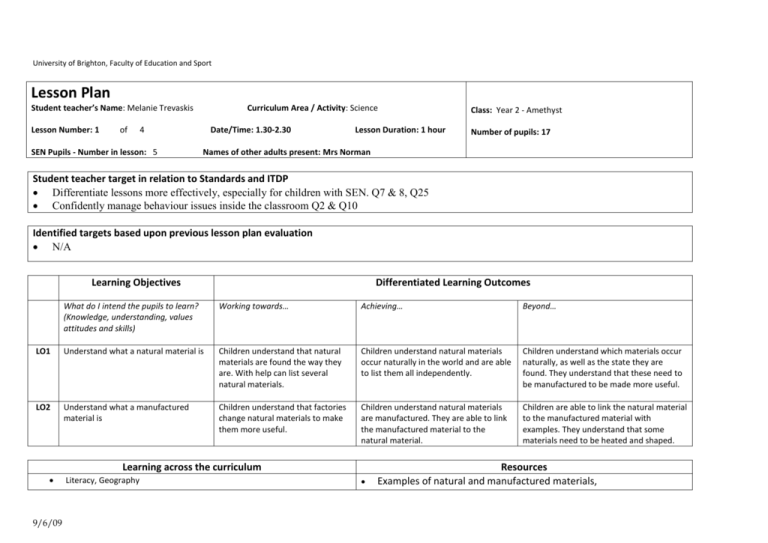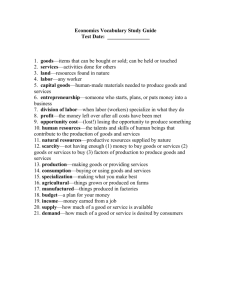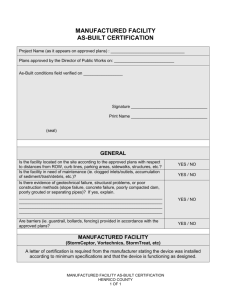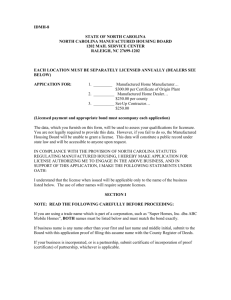Learning objectives - WhiteHouseCurriculum
advertisement

University of Brighton, Faculty of Education and Sport Lesson Plan Student teacher’s Name: Melanie Trevaskis Lesson Number: 1 of Curriculum Area / Activity: Science 4 SEN Pupils - Number in lesson: 5 Date/Time: 1.30-2.30 Lesson Duration: 1 hour Class: Year 2 - Amethyst Number of pupils: 17 Names of other adults present: Mrs Norman Student teacher target in relation to Standards and ITDP Differentiate lessons more effectively, especially for children with SEN. Q7 & 8, Q25 Confidently manage behaviour issues inside the classroom Q2 & Q10 Identified targets based upon previous lesson plan evaluation N/A Learning Objectives Differentiated Learning Outcomes What do I intend the pupils to learn? (Knowledge, understanding, values attitudes and skills) Working towards… Achieving… Beyond… LO1 Understand what a natural material is Children understand that natural materials are found the way they are. With help can list several natural materials. Children understand natural materials occur naturally in the world and are able to list them all independently. Children understand which materials occur naturally, as well as the state they are found. They understand that these need to be manufactured to be made more useful. LO2 Understand what a manufactured material is Children understand that factories change natural materials to make them more useful. Children understand natural materials are manufactured. They are able to link the manufactured material to the natural material. Children are able to link the natural material to the manufactured material with examples. They understand that some materials need to be heated and shaped. Learning across the curriculum 9/6/09 Literacy, Geography Resources Examples of natural and manufactured materials, University of Brighton, Faculty of Education and Sport Time & Learning Objectives 5 minutes LO1 & LO2 Pupil learning activities Including reference to inclusion strategies including reference to how tasks have been differentiated Children will discuss with their partners, the materials they can remember from previous lesson. Eg. Wood, plastic, glass, metal. Using TALK PARTNERS. Recap with the children the different materials they have been looking at in science. Ask individual children to write the name of these materials on their whiteboards. Then ask children to write examples of things that are made from these materials on their whiteboards. Ask children to give ideas and write on IWB. Ask the children to collaboratively read the learning intention. Ask the children to offer ideas about what they think a natural material is, and what they think a manufactured material is. Tell them that manufactured material involves going through a factory. Children will then need to think about things that are made from these materials that we looked at in our science investigation last lesson. 10 minutes LO1 & LO2 10 minutes LO1 & LO2 9/6/09 Teaching points/ strategies / teacher role Children will need to talk to their partners and then offer ideas about what they think a natural material is and what they think a manufactured material is. Children need to observe what their fellow class mate is doing and respond with what they think the correct answer is. Ask children to come to the front of the class and draw a line on the IWB connecting the natural material to the manufactured material. Ask the rest of the class for thumbs up/thumbs down as a response. Children will need to think about what their object is made from before it is taken to the factory to be manufactured. Show the children a range of manufactured objects. Give each of the children an object. Tell them you need them to help you sort them into the correct column for their natural material. They will need to respond when asked by the teacher. Individually ask children which column they think their object should go in. Others may help if they struggle. Organisation and risk assessment. Assessment for learning strategies Children will be sat on the carpet in front of the teacher. Assess how much the children can remember from last lesson. As well as if they are able to identify the difference between the material and what is made from the material. Formal and informal TA will be sat with SEN children at the table. Assess children’s understanding natural and manufactured materials. Assess children’s understanding of the natural material their object came from before it was manufactured. University of Brighton, Faculty of Education and Sport 20 minutes LO1 & LO2 Show children their worksheet and explain they need to cut and stick pictures into the correct box. They will also need to add more pictures by drawing them. SEN – Pictures will be paper clipped together in their separate piles. One will be natural materials, the other manufactured materials. They will simply need to sort these and stick them down in the correct box. They will also have a range of manufactured materials on their table for them to look at and draw. They need to draw them in the correct box. Send children to their ability groups for Literacy. Children will be working in pairs in their groups. TA will be working with children on SEN table. Assess how well children work together in their pairs, dividing the work evenly amongst themselves. MA – Children will have a plastic wallet with pictures of natural and manufactured materials inside. They will need to sort them so that they are stuck down in the correct box on their page. They will have some manufactured materials on their table that they can look at the draw. They will need to think of more to add on their own. HA – Children will have a plastic wallet with pictures of natural and manufactured materials inside. They will need to sort them so that they are stuck down in the correct box on their page. They will need to think of more manufactured materials and draw them in the correct boxes on their page. 9/6/09 Assess children’s ability to classify and identify the various manufactured materials. The teacher will be working with children on HA. Asking them questions that will help them think of more ideas for manufactured materials. University of Brighton, Faculty of Education and Sport 15 minutes LO1 & LO2 9/6/09 Ask children to tidy their tables and return to the carpet. Ensuring both their names are on their work and they have traffic lighted it. Children will need to talk to their partners and discuss what they have learnt. They will need to feed this back to the teacher. The children will need to watch the game and decide where the object needs to go. Ask children to explain what a natural material is and what a manufactured material is. Use TALK PARTNERS. Play a game with them on the IWB. Ask the children to sort the manufactured materials into the right box for their natural material. Assess children’s ability to sort out the manufactured materials to their natural material. University of Brighton, Faculty of Education and Sport Lesson evaluation To what extent have the learning outcomes been achieved in relation to the learning objectives LO1 LO2 Targets for the next lesson based upon evaluation of pupil learning Reflection of teaching/ management/ organisation strategies 9/6/09







